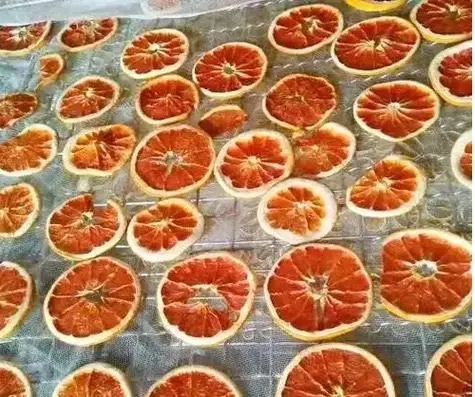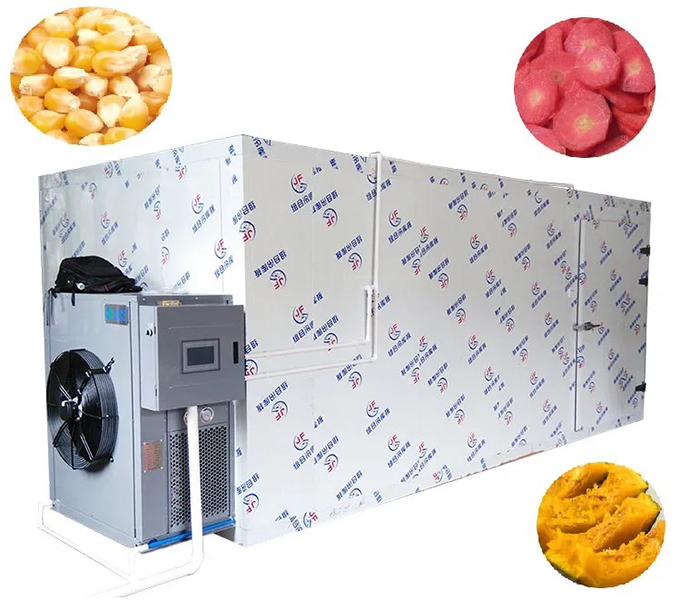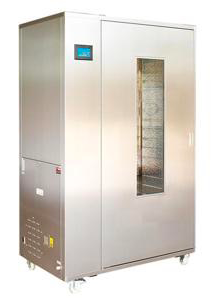
Content Menu
● Understanding Food Dehydrators
>> Key Benefits of Food Dehydration:
● Top Features of Compact Heat Pump Dryers
>> Energy Efficiency
>> Adjustable Temperature Settings
>> Compact Design
>> Automatic Shut-off Feature
>> User-friendly Controls
● How Compact Heat Pump Dryers Work
● Applications in Food Processing
● Choosing the Right Food Dehydrator
● Popular Models in the UK Market
● Conclusion
● FAQ
>> 1. What types of foods can I dehydrate using a compact heat pump dryer?
>> 2. How long does it take to dehydrate food?
>> 3. Is it safe to dehydrate meat?
>> 4. Can I use a compact heat pump dryer for commercial purposes?
>> 5. How do I clean my dehydrator?
● Citations:
In the world of food preservation, the importance of using a food dehydrator cannot be overstated. These machines are designed to remove moisture from various types of food, extending their shelf life while maintaining nutritional value and flavor. As a manufacturer specializing in food drying machines, we recognize the growing demand for efficient and compact solutions, especially in the UK market. This article will explore the top features of compact heat pump dryers and how they relate to food dehydrators, providing insights into their functionality, benefits, and applications.

Understanding Food Dehydrators
Food dehydrators are specialized appliances that utilize low heat and air circulation to remove moisture from food. This process not only preserves the food but also enhances its flavors and nutritional content.
Key Benefits of Food Dehydration:
- Nutrient Retention: Unlike traditional preservation methods such as canning or freezing, dehydrating retains most vitamins and minerals.
- Enhanced Flavor: Dehydration concentrates natural sugars, resulting in richer flavors.
- Longer Shelf Life: Removing moisture inhibits the growth of bacteria and mold, allowing dehydrated foods to last for months or even years when stored properly.
- Versatility: Dehydrated foods can be rehydrated for various culinary applications, from snacks to ingredients in recipes.
Top Features of Compact Heat Pump Dryers
Compact heat pump dryers are increasingly popular in the UK due to their energy efficiency and space-saving design. Here are some of the top features that make them suitable for food dehydration:
Energy Efficiency
Heat pump dryers operate using a closed-loop system that reuses hot air, significantly reducing energy consumption compared to traditional dryers. This feature is particularly beneficial for food manufacturers looking to minimize operational costs while maintaining high-quality output.
For instance, modern heat pump technology allows for drying at lower temperatures, preserving critical product quality characteristics while using up to 60% less energy than conventional dryers. This not only reduces costs but also supports sustainable practices within the food industry.
Adjustable Temperature Settings
Most compact heat pump dryers come with adjustable temperature controls, allowing users to set specific temperatures suitable for different types of foods. This flexibility is crucial for achieving optimal drying results without compromising the integrity of the food.
Typically, these machines offer a temperature range from 30°C to 70°C (86°F to 158°F), making them versatile enough for various products like fruits, vegetables, meats, and herbs. Users can experiment with different settings to find the perfect balance for each type of food.
Compact Design
The compact size of these dryers makes them ideal for small kitchens or production spaces. Their design allows for easy storage and mobility, catering to both home users and commercial operations.
Many models feature a vertical design that maximizes drying space without requiring a large footprint. This is particularly advantageous for urban dwellers or small-scale producers who need efficient use of space.

Automatic Shut-off Feature
Many modern dryers include an automatic shut-off feature that enhances safety by preventing overheating. This function is particularly important in commercial settings where unattended operation may occur.
Additionally, this feature ensures that users do not have to constantly monitor the drying process, allowing them to focus on other tasks while achieving consistent results.
User-friendly Controls
Digital controls with clear displays make it easy to monitor drying times and temperatures. Some models even offer preset programs tailored for specific foods, simplifying the dehydration process for users.
The intuitive interface often includes timers that can be set for extended periods (up to 48 hours), which is especially useful when drying larger batches or more complex items like jerky or fruit leathers.
How Compact Heat Pump Dryers Work
The operation of a compact heat pump dryer involves several key steps:
1. Air Circulation: The dryer draws in ambient air, which is then heated using a heat exchanger.
2. Moisture Removal: The warm air circulates around the food items, evaporating moisture without cooking the food.
3. Recycling Air: The moisture-laden air is then passed through a condenser where moisture is removed, and the dry air is reheated and recirculated.
4. Temperature Control: Users can adjust settings based on the type of food being dried, ensuring optimal conditions for each item.
Applications in Food Processing
Compact heat pump dryers are versatile tools in various food processing applications:
- Fruit Drying: Ideal for creating dried fruits such as apples, mangoes, and apricots.
- Vegetable Preservation: Effective for dehydrating vegetables like tomatoes, peppers, and herbs.
- Meat Jerky Production: Suitable for making jerky by controlling temperatures to inhibit bacterial growth while effectively removing moisture.
- Snack Production: Perfect for creating healthy snacks from fruits and vegetables without added preservatives.
Choosing the Right Food Dehydrator
When selecting a compact heat pump dryer or food dehydrator, several factors should be considered:
- Capacity: Depending on your needs—whether it's personal use or commercial production—choose a model with adequate capacity (number of trays) to handle your typical batch sizes.
- Ease of Cleaning: Look for models with removable trays that are dishwasher-safe or easy to wipe down after use.
- Noise Level: If noise is a concern (especially in home settings), consider models known for quieter operations.
- Durability: Investing in high-quality materials will ensure longevity and reliability over time.
Popular Models in the UK Market
Several models stand out in the UK market due to their performance and features:
- COSORI Food Dehydrator: Known for its sleek design and user-friendly interface, it performs well across various tests including fruit leather and jerky production.
- Excalibur 3926T: A favorite among serious dehydrators due to its large capacity and even drying capabilities thanks to its rear-mounted fan design.
- Nesco Gardenmaster Pro Dehydrator: Offers customizable temperature settings and expandable tray options up to 20 trays, making it suitable for larger batches.
These models exemplify how compact heat pump technology can be effectively utilized in home kitchens as well as commercial settings.
Conclusion
In conclusion, compact heat pump dryers represent a significant advancement in food dehydration technology. Their energy efficiency, adjustable settings, compact design, safety features, and user-friendly controls make them an excellent choice for both home cooks and commercial food producers. As demand continues to rise globally, investing in high-quality food dehydrators can enhance product offerings while promoting sustainability through reduced waste.

FAQ
1. What types of foods can I dehydrate using a compact heat pump dryer?
You can dehydrate a wide variety of foods including fruits (like apples and bananas), vegetables (such as tomatoes and peppers), herbs (like basil and thyme), and meats (for jerky).
2. How long does it take to dehydrate food?
Dehydration time varies based on the type of food and its moisture content. Generally, fruits may take 6-12 hours while meats can take 4-8 hours depending on thickness.
3. Is it safe to dehydrate meat?
Yes, as long as you follow proper guidelines regarding temperature control (usually above 160°F) to eliminate bacteria during the drying process.
4. Can I use a compact heat pump dryer for commercial purposes?
Absolutely! Many compact heat pump dryers are designed with commercial-grade features suitable for small-scale production or restaurant use.
5. How do I clean my dehydrator?
Most dehydrators have removable trays that can be washed by hand or placed in a dishwasher. Regular cleaning after each use helps maintain hygiene and prolongs the life of your appliance.
Citations:
[1] https://www.bio-conferences.org/articles/bioconf/pdf/2023/09/bioconf_abt2023_01023.pdf
[2] https://www.seriouseats.com/best-food-dehydrators-5216308
[3] https://www.goodhousekeeping.com/uk/product-reviews/electricals/g25572057/best-tumble-dryers/
[4] https://www.smartblend.co.uk/blog/the-best-budget-dehydrators-for-cocktail-garnishes-and-drinks
[5] https://nyledehydrators.com
[6] https://www.backpackingchef.com/cosori-dehydrator.html
[7] https://www.treelinereview.com/gearreviews/best-food-dehydrator
[8] https://www.ike.cn/aiwz-a-food-dehydrator-review-how-to-compare-food-dehydrator-products-and-features-food-dryer-dehydrator
[9] https://www.thespruceeats.com/best-food-dehydrators-4077285
[10] https://iufost.org/iufostftp/IntroDehydrationManual.pdf











